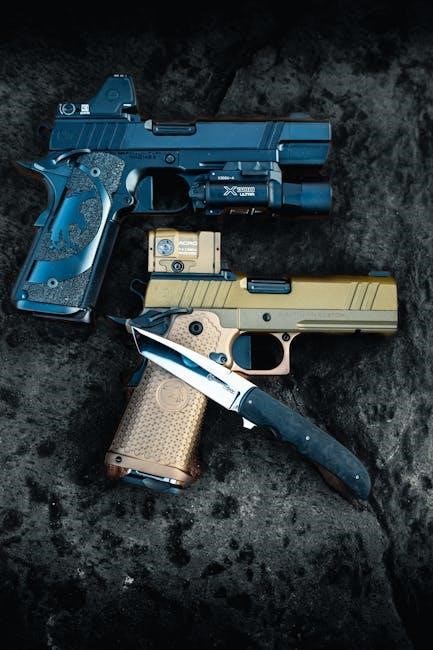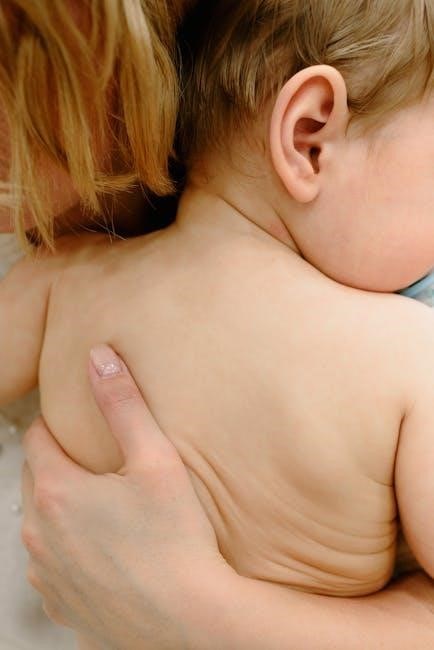Juki MO-7600 Knife Guide Attachment: An Overview
The Juki MO-7600 serger is known for high-speed performance in overlock and interlock sewing. A key component is its knife system, crucial for clean fabric edges. Proper maintenance and timely replacements of the upper and lower knives are essential for optimal cutting performance.
Understanding the Juki MO-7600 Serger
The Juki MO-7600 series represents a line of high-speed, semi-dry head overlock and interlock sewing machines designed for industrial use. These machines are engineered for efficiency and precision, making them suitable for handling a wide range of fabrics. The knife system is particularly important, ensuring clean and consistent edge trimming during the sewing process.
Maintenance of the Juki MO-7600 serger involves regular cleaning, lubrication, and timely replacement of worn parts, especially the knives. The upper and lower knives work together to trim excess fabric as the seam is sewn, contributing to a professional finish. Proper adjustment and alignment of the knives are crucial for preventing fabric damage and maintaining optimal cutting performance.
The Juki MO-7600 series also features adjustable settings for stitch length and differential feed, allowing users to customize the machine’s performance based on the specific fabric and project requirements. Familiarity with the machine’s manual and regular maintenance are key to maximizing its lifespan and ensuring consistent, high-quality results.

Identifying Compatible Juki Serger Models
Several Juki serger models share compatibility regarding knife replacements. These include MO-623, MO-634, MO-634D, MO-613, MO-634DE, MO-664, MO-644D, MO-654DE, MO-655, MO-655DE, and MO-735. Knowing compatible models ensures you purchase the correct replacement knives for your machine.
MO-623, MO-634, MO-634D
The Juki MO-623, MO-634, and MO-634D serger models represent a range of machines known for their user-friendly design. These models often feature color-coded threading guides, making setup straightforward. The MO-634D is particularly popular due to its differential feed capability, which allows for adjustments to prevent puckering or stretching of fabrics, especially useful for knits and delicate materials.
These sergers typically offer 2/3/4 thread options, providing versatility in stitch types. Regular maintenance, including knife replacement, is vital for maintaining optimal performance. Compatible upper knife part numbers include 50143403 and A4142-335. Ensuring the knives are sharp is crucial for clean, consistent cutting.
These models are well-suited for both beginners and experienced sewers looking for a reliable and easy-to-use serger. Adjustments for stitch length and cutting width further enhance their adaptability to various projects.
MO-613, MO-634DE, MO-664
The Juki MO-613, MO-634DE, and MO-664 models offer a blend of simplicity and functionality. The MO-613 is known for its basic overlocking capabilities, while the MO-634DE enhances this with differential feed, vital for handling stretchy fabrics. The MO-664 provides further options, making it a versatile choice for various sewing projects.
These sergers often require specific upper and lower knives for optimal cutting performance. Compatible upper knife part numbers include 50143403 and A4142-335. Regular knife replacement is crucial for clean and consistent fabric edges. The lower knife, in particular, needs careful maintenance to ensure it remains flush with the needle plate.
Users appreciate the ease of threading, often supported by color-coded guides. These models are suitable for both beginners and experienced sewers, offering a balance of features and user-friendliness. Adjustments for stitch length and cutting width add to their adaptability.
MO-644D, MO-654DE, MO-655, MO-655DE, MO-735
The Juki MO-644D, MO-654DE, MO-655, MO-655DE, and MO-735 serger models represent a range of advanced features. The MO-644D offers differential feed and easy threading, while the MO-654DE adds adjustable stitch length and width. Models like the MO-655 and MO-655DE include enhanced cutting systems and more stitch options;
The MO-735 stands out with its 2/3/4/5 thread capability, providing versatility for various fabrics and finishes. Proper knife maintenance is crucial for all these models. The upper knife, made from hardened material, should be replaced when damaged, using parts like 50143403 or A4142-335.
These sergers feature adjustable lower knife positions, allowing for precise seam allowances and rolled edges. Regular lubrication with Juki Machine Oil 18 ensures smooth operation. The MO-735, in particular, benefits from careful adjustment of the differential feed for optimal results on stretchy fabrics.

Replacement Knife Types
Juki sergers, like the MO-7600, utilize two main knife types: the upper (moving) knife and the lower knife. The upper knife trims fabric as it moves, while the lower knife provides a stationary cutting edge. Both require occasional replacement.
Upper Knife (Moving Knife)
The upper knife, also known as the moving knife, is a critical component of the Juki MO-7600 serger’s cutting system. It is responsible for making the primary cut as the fabric feeds through the machine. This knife is made from specially hardened material to withstand the constant friction and impact during high-speed operation.
Due to its continuous movement and contact with various fabric types, the upper knife is prone to wear and tear. Over time, the blade can become dull or damaged, leading to ragged edges or skipped cuts. It is therefore important to regularly inspect the upper knife for any signs of damage.
When the upper knife blade tip is damaged, immediate replacement is necessary to maintain clean and precise cutting. Using a damaged or dull upper knife can strain the serger’s motor and negatively impact the quality of the finished seams.
Several Juki models are compatible with specific upper knife replacements, including the MO-623, MO-634, MO-634D, MO-613, MO-634DE, MO-664, MO-644D, MO-654DE, MO-655, MO-655DE, and MO-735.
Lower Knife
The lower knife, also known as the fixed knife, works in tandem with the upper knife to provide a clean and precise cut on the fabric edge. Unlike the upper knife, the lower knife remains stationary, providing a stable cutting surface against which the upper knife slices.
Although the lower knife does not move, it is still subject to wear and tear from constant contact with the fabric and the upper knife. Over time, the edge of the lower knife can become dull or nicked, which can affect the quality of the cut. This can lead to uneven seams and difficulty in feeding fabric smoothly through the serger;
Regular inspection of the lower knife is essential to ensure it remains sharp and free from damage. Some users find that sharpening the lower knife can extend its lifespan, but it is crucial to maintain the correct angle to ensure it aligns properly with the needle plate.
When replacement is necessary, it’s important to select the correct lower knife model for your Juki MO-7600 serger, ensuring compatibility and optimal performance. The lower knife must be flush with the needle plate.
Knife Replacement Procedures
Replacing the knives on a Juki MO-7600 is a straightforward process, but it requires careful attention to safety and precision. The upper and lower knives have different replacement procedures, each involving specific steps to ensure proper alignment and functionality.
Changing the Upper Knife
The upper knife, also known as the moving knife, is crafted from hardened material. It typically only needs replacement when the blade tip is damaged. Before starting, ensure the serger is turned off to prevent accidents.
To begin, turn the handwheel until the upper knife is fully raised. Open the looper cover for better access. Locate the part indicated as (A) in the manual and press it towards the right until it reaches its limit.
Next, loosen the screw that secures the upper knife. Remove the old knife and insert the new upper knife. Make sure the new knife is correctly positioned before tightening the screw. Once secured, test the serger to confirm the new knife is cutting effectively.
Refer to the Juki MO-735 or MO-114D manual for detailed diagrams. These instructions are important for safe and accurate upper knife replacement, ensuring optimal serger performance.
Changing the Lower Knife
Replacing the lower knife on a Juki MO-7600 serger requires careful attention to ensure proper alignment and cutting performance. Start by turning off the machine and unplugging it for safety. Locate the screw that secures the lower knife to the serger.
Loosen this screw, but do not remove it completely. Gently slide the old lower knife out of its slot. Insert the new lower knife, ensuring it sits flush with the needle plate. Proper alignment is crucial for clean and accurate cuts.
Tighten the screw to secure the new knife in place. Double-check that the knife moves freely and does not bind. Use an old knife to push the new one into position for perfect alignment. After installation, test the serger on a scrap piece of fabric to verify the knife is cutting correctly.
If necessary, make small adjustments to the knife position to achieve optimal performance. Refer to the service manual for detailed diagrams. Be patient and take your time to ensure the lower knife is correctly installed.

Adjusting the Knife for Optimal Performance
Fine-tuning the knife position ensures clean cuts and prevents fabric damage. Adjustments involve using the lower knife adjustment knob and assessing lateral positioning. Proper adjustments guarantee consistent cutting, essential for professional-quality serging.
Lower Knife Adjustment Knob
The Juki MO-7600 series, including models like the MO-654DE and MO-655, feature a lower knife adjustment knob. This knob offers quick adjustments to modify the width of fabric in the seam allowance. The lower knife adjustment knob is essential for achieving perfect seams and rolled edges on various fabric types and weights. By turning this knob, users can fine-tune the cutting width, ensuring consistent and precise results. This is particularly useful when working with different fabrics that require varying seam allowances or when creating decorative rolled hems. The ability to make these adjustments quickly without tools saves time and enhances the overall sewing experience. The lower knife adjustment knob is a valuable feature that allows for greater control and customization of the serging process. It ensures that the serger can handle a wide range of projects with ease and precision, making it a versatile tool for both beginners and experienced sewers. It allows you to achieve a professional finish every time.
Lateral Position Adjustment
The lateral position adjustment of the upper knife on the Juki MO-7600 is crucial for achieving precise and clean cuts. This adjustment involves modifying the sideways placement of the upper knife in relation to the lower knife and the fabric edge. Proper lateral positioning ensures that the upper knife aligns correctly with the lower knife, resulting in a smooth and consistent cutting action. When the lateral position is misaligned, it can lead to unsharp cutting or abnormal wear on the knives. To adjust the lateral position, locate the adjustment screw near the upper knife arm. Loosening this screw allows you to gently slide the upper knife arm to the left or right until the knife is properly aligned. After making the adjustment, securely tighten the screw to fix the knife in its new position. Regularly check and adjust the lateral position to maintain optimal cutting performance and prolong the life of the knives. This ensures clean, professional-looking seams every time. Proper alignment prevents uneven cutting and fabric damage.

Troubleshooting Cutting Issues
When using the Juki MO-7600 serger, encountering cutting issues can be frustrating. Common problems include skipped stitches, uneven edges, and fabric snagging. One primary cause is dull or damaged knives. Regularly inspect both the upper and lower knives for wear and replace them when necessary to maintain a sharp cutting edge. Incorrect knife alignment is another frequent culprit. Ensure that the upper and lower knives are properly aligned according to the manufacturer’s specifications. Adjust the lateral position of the upper knife if needed, and verify that the lower knife is flush with the needle plate. Fabric type can also impact cutting performance. Thicker or denser fabrics may require adjustments to the knife pressure or differential feed settings. Test different settings on scrap fabric to find the optimal combination for your material. Thread tension issues can indirectly affect cutting, so make sure the thread tension is balanced. Additionally, check for any obstructions or lint buildup in the knife mechanism, as this can impede smooth cutting action. Regularly cleaning and lubricating the serger can prevent many of these issues. If problems persist, consult the Juki MO-7600 service manual.
